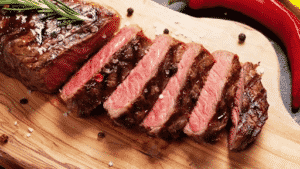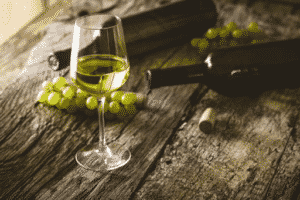
If you’re a wine enthusiast, then there’s no doubt that you’ve heard about tannins. More prevalent in red wines, tannins give off a bitter taste and cause a drying sensation in the mouth when taking a sip.
Tannins are not only prevalent in wines but even in food. One can find them in barks of certain plants, cocoa, walnut, grapes, and much more. Any food with a slight tinge of bitterness likely has them present.
In this article we’ll dive into everything about them. What they are, what they do, why they are present in wines and other foods, and their health benefits.
Related: Vegan and Organic Wine
Tannins in wine
What are tannins?
Tannins refer to a type of water-soluble polyphenol compound that is naturally occurring in many plants. In nature, they have a bitter taste and astringent properties that are meant to protect the plants from being tasty to potential invaders. Luckily, when managed properly in the wine making process, they add a depth of complexity and flavor to wines, particularly red wines.
Skins of grapes are sources of tannins, and similarly, one will find traces of them in seeds, buds, leaves or wine barrels.
Wines that are high in tannins usually offer a dry and astringent mouthfeel that primarily hits on the middle of your tongue and the front part of your mouth.
The main difference between red and white wine and their level of tannin comes how the wines are generally made and fermented. During fermentation of red wine, the skins are put in the same tanks as the juice which allows for longer skin contact time and imparting that desirable tannic structure into the red wine.
Ready to try some delicious wine, see what Wine Country Travel has to offer!
How Tannins Work
Tannins work by binding to proteins found predominantly in one’s saliva and this binding is what leads to one’s mouth feeling dry when drinking red wine. Many wine lovers prefer to pair a red wine and a delicious steak since it binds with proteins and helps reduce the fattiness textures and taste delivered by the steak’s fat compounds.
Examples of Foods that go Well with Tannic Wines

There are many great pairings with tannic wines but the best foods tend to be those that are higher in fat.
Foods high in fat such as beef benefit from the protein-binding qualities of tannins as well as the astringent qualities of the wine that counteracts the fattiness of the meat.
Related: 10 Great Food Pairings with Wine
Does the Origin of the Grape Matter?
The short answer is yes. Grapes grow under different climatic conditions all across the world which impacts their flavor profile and properties. This means the nature of the tannins varies depending on the geographical area. Some varieties of grapes have more tannins as compared to others.
Some examples of grapes that can have a high concentration of tannins are Malbec, Nebbiolo, Merlot, Tempranillo, and, of course, Cabernet Sauvignon. Whether the wines that result from these grapes end up being high in tannins is really dependant on the wine maker’s style and how much of the tannins he or she wants to extract when going through the wine making process.
Certain varieties such as Pinot Noir and Gamay whose skins are thin have less tannin in them. Tropical areas such as Barossa and Australia produce super-ripe grapes, and therefore their tannins tend to be more smooth, rounded and lush. On the other hand, temperate climates tend to have more structured and dry tannins.
Ready to try some delicious wine, see what Wine Country Travel has to offer!
How Do Tannins Help Red Wine Age?
Certainly, tannins impact the aging process of wine, but it should be noted that white wines aren’t generally as tannic, but can age well too. The mouthfeel often changes when a good red wine is maturing. In early stages, the tannins are small in size, but with time they combine to form big chains.
Experts suggest that tannins have a reactive surface that is reduced as wine ages which then creates the characteristic softer mouthfeel often associated with well aged red wines. The reasoning behind this is that the longer tannic chains eventually fall to the bottom of the wine bottle as residues or sediment.
In most cases, mature red wines are seen to possess “resolved” tannins. These are the smooth and soft qualities with little astringent that often describe older wine. It’s essential to note that if your red wine is harsh, bitter and doesn’t have well balanced tannins at the beginning, no amount of aging will clear up the bitterness or the unbalanced texture.
Achieving the Correct Tannin Concentration
A key stage concept in making wine is the process of maceration.
During this stage, the red wine comes into contact with the skin of the grapes. If this happens for a short time, there will be less color and little amount of tannins. However, a longer fermentation time will result in more tannins making its way into the wine.
After fermentation, the next step is the separation of liquids from the solids, and this involves pressing the wine. Some wineries have a step by step approach for pressing wine in batches under varying pressure settings.
Higher pressure means a high amount of tannin, while low pressure will give wine less tannin. Different degrees of pressure allows for the extraction of specific blends for consistency and quality provision across several vintages. The best red wine will be a blend of factors such as the type of grape, ripeness, and skin and extraction method.
Furthermore, new barrels made from oak help in leaching tannins present in wood and into the wine. However, the wine must be of a certain weight, structure, and power since the oak’s tannins might overwhelm it.
Excellent tannin management methods prevent wine from being bitter or too harsh which can happen when unripe grapes are used or over-extraction occurs.
Ready to try some delicious wine, see what Wine Country Travel has to offer!

Tannins in White and Orange Wines
So far, we have discussed red wines and tannins, but how does this relate to white and orange wines? How do tannins differ for them?
Usually, white wines go through a shorter maceration, also referred to as skin contact.
Fresh grapes require crushing and are usually left to allow the skins to start fermenting. This process allows for the extraction of the flavors from the skins. This stage is typical for aromatic grapes as well as semi-aromatic.
Orange wines are trending, and their raw material is white grape vinified with the intact skin just like the red wines. When you sip an orange wine, you ’ll feel a mild sensation and a mouthfeel just like the red wines. However, it’s not as powerful as red wine.
Sparkling Wines and Tannin
When you pour sparkling wine into a glass, millions of bubbles create a spectacle. However, these do more than just look pretty, since they offer a structure effect on the wine.
SInce many sparkling wines continue fermenting inside the bottle, they often acquire texture from aging on yeast and tannins. There may be some bitterness due to the tannins and the bubble will exacerbate astringency. This makes the pressings for high-quality sparkling wines essential in order to remove some of the undesirable qualities that can be present.
Related: Sparkling Wine vs Champagne
Do Tannins Have Health Benefits?
Tannins health benefits are enormous. Tannins have antioxidant, antimicrobial, and antiviral qualities. It has also been suggested in some studies that they may help fight high blood pressure and promote blood clotting.
Takeaway
Next time you sip a glass of wine and feel that dry sensation mid-palate, you’ll know you are experiencing the impact of the tannins in the wine and hopefully will have a better understanding of where they come from and how they impact the wine.
Pairing food with wines that have great tannic structure is truly a treat treat that can enhance the meal in fantastic ways.
If you’d like to experience a fabulous food and wine package in Napa or Sonoma, see what Wine Country Travel has to offer!
1 thought on “What are Tannins?”
Comments are closed.